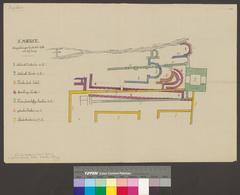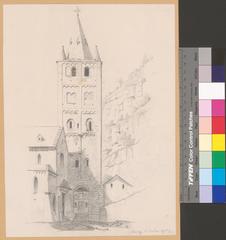
Comprehensive Guide to Visiting Abbaye de Saint Maurice, Finhaut, Switzerland
Date: 24/07/2024
Introduction
Nestled in the picturesque Canton of Valais in Switzerland, the Abbaye de Saint-Maurice is a site of profound historical and cultural significance. Founded in 515 A.D., this abbey stands as a testament to over 1,500 years of religious devotion, architectural evolution, and educational contributions. Built on the ruins of a Roman shrine dedicated to Mercury, it has transformed into one of the most enduring monastic communities in Western Europe (Wikipedia). This guide aims to provide an in-depth exploration of the abbey’s rich history, visitor information, and travel tips to ensure a memorable experience for history enthusiasts and pilgrims alike.
Table of Contents
Historical Background
Origins and Early History
The Abbaye de Saint-Maurice traces its origins back to the 1st century B.C., when it was built on the ruins of a Roman shrine dedicated to the god Mercury in the Roman staging-post of Agaunum. This early religious site laid the groundwork for what would become one of the most enduring monastic communities in Western Europe (Wikipedia).
The Martyrdom of Saint Maurice and the Theban Legion
A pivotal moment in the abbey’s history is the martyrdom of Saint Maurice and the Theban Legion. According to historical accounts, Saint Maurice led the Theban Legion, a group of Christian Roman soldiers from Egypt, in the 3rd century A.D. The legion was martyred in 286 A.D. for refusing to sacrifice to the Roman Emperor Maximian. Orders were given to decimate the legion by killing a tenth of its men, a process repeated until the entire legion was put to death (The Catholic Travel Guide).
Foundation of the Abbey
The abbey was officially founded in 515 A.D. by King Sigismund of Burgundy, who was the first ruler in his dynasty to convert from Arian Christianity to Trinitarian Christianity. Sigismund established the abbey as a monastery and instituted the practice of perpetual prayer, known as laus perennis, where chants were sung day and night by several choirs in rotation without ceasing (Wikipedia). This practice continued until the 9th century when the monks were replaced by a community of canons.
Architectural Evolution
The architectural evolution of the abbey is a testament to its long-standing significance. The present-day Basilica dates back to the 15th century and contains elements from between the 11th and 20th centuries. The site also includes catacombs, a treasury with precious gold and silverware, and an archaeological site that retraces over 1,500 years of uninterrupted monastic life (My Switzerland).
The Ewer of Saint-Maurice d’Agaune
One of the abbey’s most prized possessions is the Ewer of Saint-Maurice d’Agaune, a richly decorated piece of liturgical art. The abbey’s treasury is considered one of the richest and best-preserved collections in Western Europe, showcasing the abbey’s historical and cultural wealth (Wikipedia).
Political Turmoil and Control
The abbey’s history is also marked by periods of political turmoil. In the mid-9th century, Hucbert, brother-in-law of Emperor Lothair II, seized control of the abbey. He was later killed in a battle at the Orbe River in 864, and Count Conrad of Auxerre, the victor, became the commendatory abbot of the abbey (Wikipedia).
Educational Contributions
The abbey has a long-standing tradition of education. The Lycée-collège de l’Abbaye de Saint-Maurice is a gymnasium that offers the matura as the school-leaving qualification. The canons have educated students at the abbey since its foundation, and the school in its modern form was opened in 1806. Notable alumni include former FIFA president Sepp Blatter and former Presidents of Switzerland Alphons Egli and Pascal Couchepin (Wikipedia).
Modern-Day Significance
Today, the abbey continues to be a site of religious and cultural importance. It is a Swiss heritage site of national significance and attracts visitors and pilgrims from around the world. The abbey recently celebrated its 1500th anniversary by opening a new museum space, featuring exhibitions and multiple sites accessible to the public. The museum uses an original audio system to guide visitors through the Basilica, the archaeological site, and the treasury room (My Switzerland).
Visitor Information
For those planning to visit, the abbey is open from April to October, Tuesday to Friday from 10 am to 5:30 pm, and on weekends from 1:30 pm to 5:30 pm. From November to March, it is open Tuesday to Sunday from 1:30 pm to 5:30 pm. The average visit time is approximately 90 minutes (My Switzerland).
Tickets and Accessibility
Ticket prices for visiting the Abbaye de Saint-Maurice are available on the official website. The abbey is wheelchair accessible, ensuring that all visitors can explore its historical treasures without difficulty. Guided tours are also available for those interested in a more in-depth exploration of the site.
Nearby Attractions
The Canton of Valais offers numerous other historical sites and attractions worth visiting. Nearby, you can explore the picturesque town of Saint-Maurice, the stunning Gorges du Dailley, and the impressive Château de Saint-Maurice.
FAQ
Q: What are the visiting hours for Abbaye de Saint-Maurice?
A: The abbey is open from April to October, Tuesday to Friday from 10 am to 5:30 pm, and on weekends from 1:30 pm to 5:30 pm. From November to March, it is open Tuesday to Sunday from 1:30 pm to 5:30 pm.
Q: How much are tickets to Abbaye de Saint-Maurice?
A: Ticket prices can be found on the official website of the abbey.
Q: Is the abbey accessible for wheelchair users?
A: Yes, the abbey is wheelchair accessible.
Q: Are guided tours available?
A: Yes, guided tours are available and provide a more in-depth exploration of the site.
Conclusion
The Abbaye de Saint-Maurice stands as a monument to over 1,500 years of religious, cultural, and historical significance. From its origins as a Roman shrine to its current status as a Swiss heritage site, the abbey offers a unique glimpse into the past and continues to be a place of pilgrimage and education. Be sure to plan your visit, explore its treasures, and immerse yourself in its rich history (My Switzerland). For the latest updates and travel tips, don’t forget to follow us on social media or download our mobile app, Audiala.
References
- Wikipedia. (n.d.). Abbey of Saint-Maurice d’Agaune. Retrieved from https://en.wikipedia.org/wiki/Abbey_of_Saint-Maurice_d’Agaune
- The Catholic Travel Guide. (n.d.). Saint Maurice. Retrieved from https://thecatholictravelguide.com/destinations/switzerland/saint-maurice-switzerland-abbey-of-saint-maurice-dagaun/
- My Switzerland. (n.d.). Abbaye de Saint-Maurice. Retrieved from https://www.myswitzerland.com/en-us/experiences/abbaye-de-saintmaurice-basilique-tresor-et-site-archeologique/
- Mark’s Travel Notes. (n.d.). Saint Maurice. Retrieved from http://www.markstravelnotes.com/europe/switzerland/canton_valais/travelogues/20090523/saint_maurice/
- Catholic News Agency. (n.d.). Oldest Monastery in the West. Retrieved from https://www.catholicnewsagency.com/news/255438/oldest-monastery-in-the-west-was-built-on-the-spot-of-st-maurice-s-martyrdom
- Atlas Obscura. (n.d.). Abbey of St. Maurice d’Agaune. Retrieved from https://www.atlasobscura.com/places/abbey-st-maurice-d-agaune


